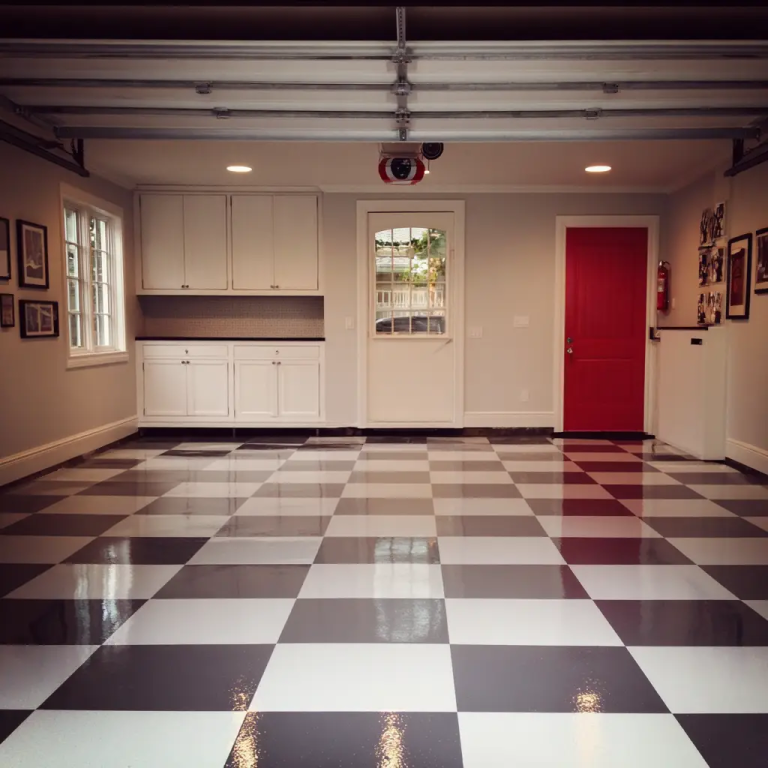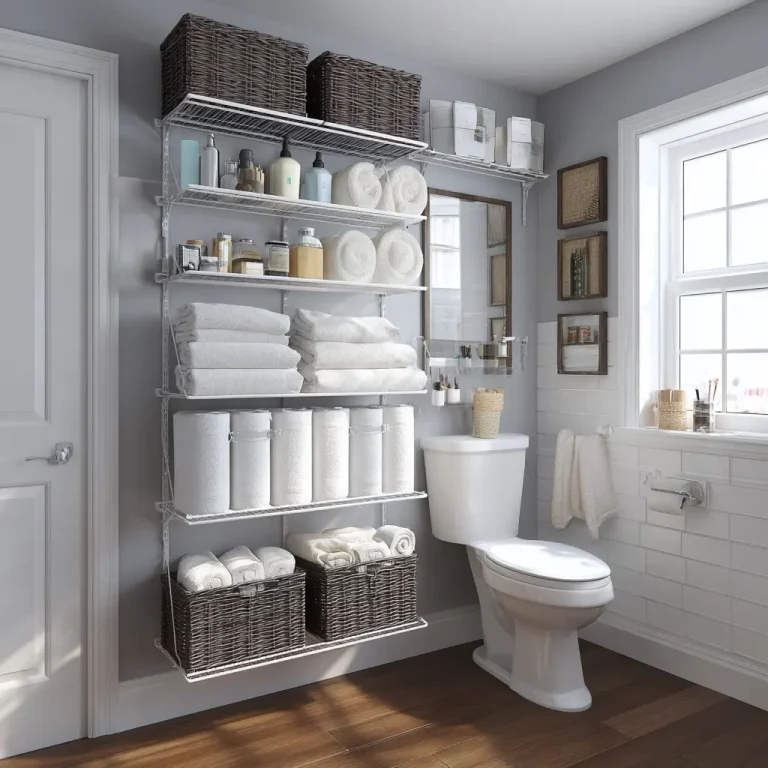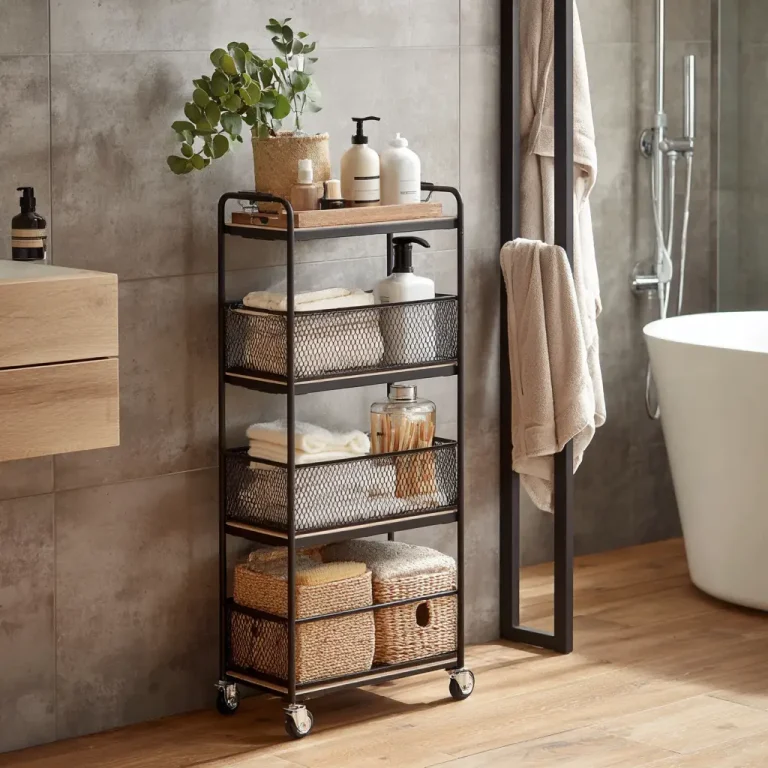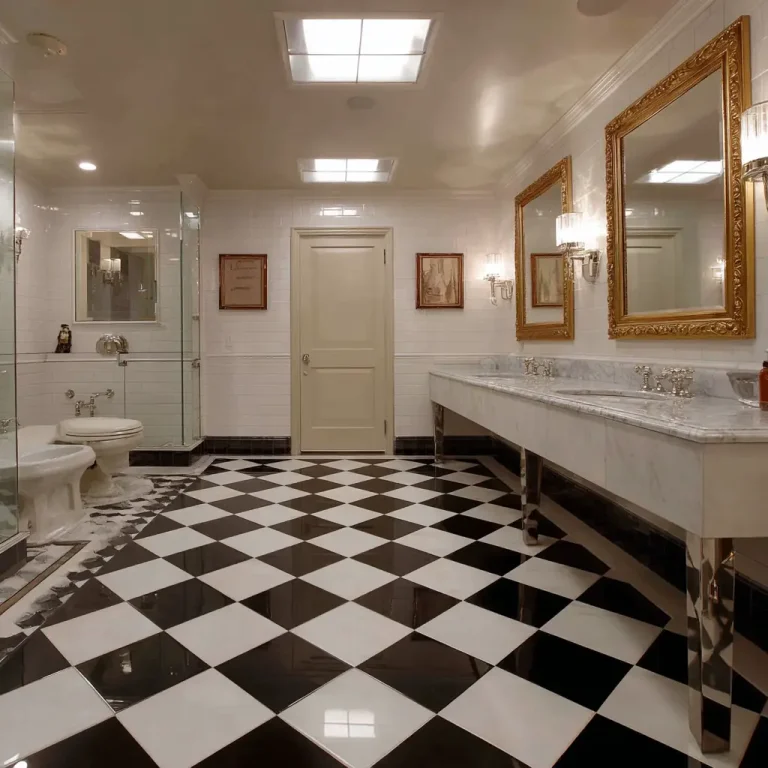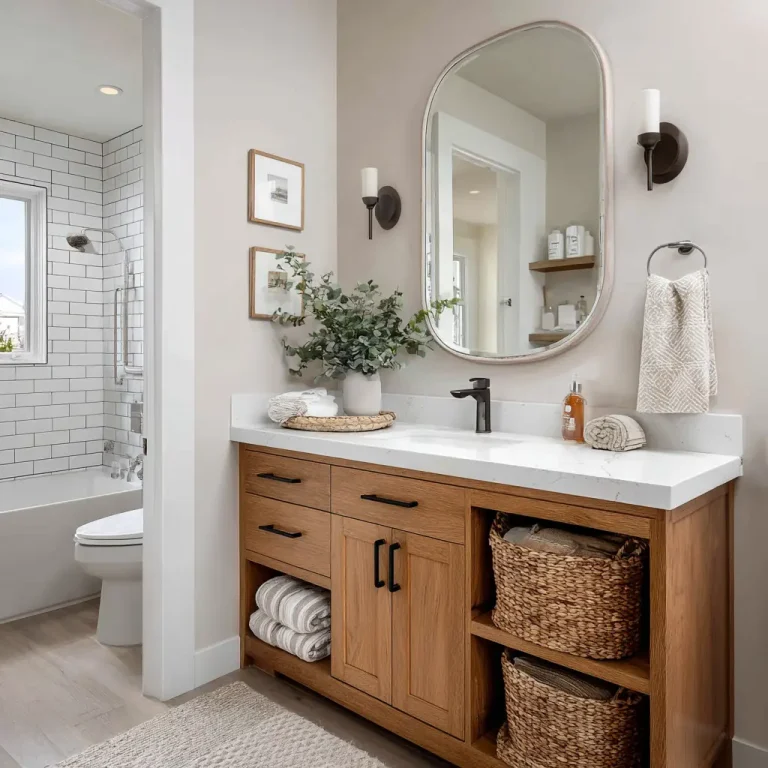22 Garden Borders That Will Instantly Elevate Your Outdoor Space
A well-designed garden border does more than define a space—it tells a story. It speaks of the gardener’s style, the atmosphere of the home, and even the seasons. Beyond its decorative charm, a garden border provides practical function: it keeps soil in place, holds mulch where it belongs, deters weeds, and clearly separates lawn from flower beds or vegetable patches. Whether you love clean lines or a rustic, natural look, the right garden border can make your entire outdoor space feel intentional and well-loved.
Here are 22 garden border ideas that go beyond ordinary and invite creativity, character, and charm into your garden.
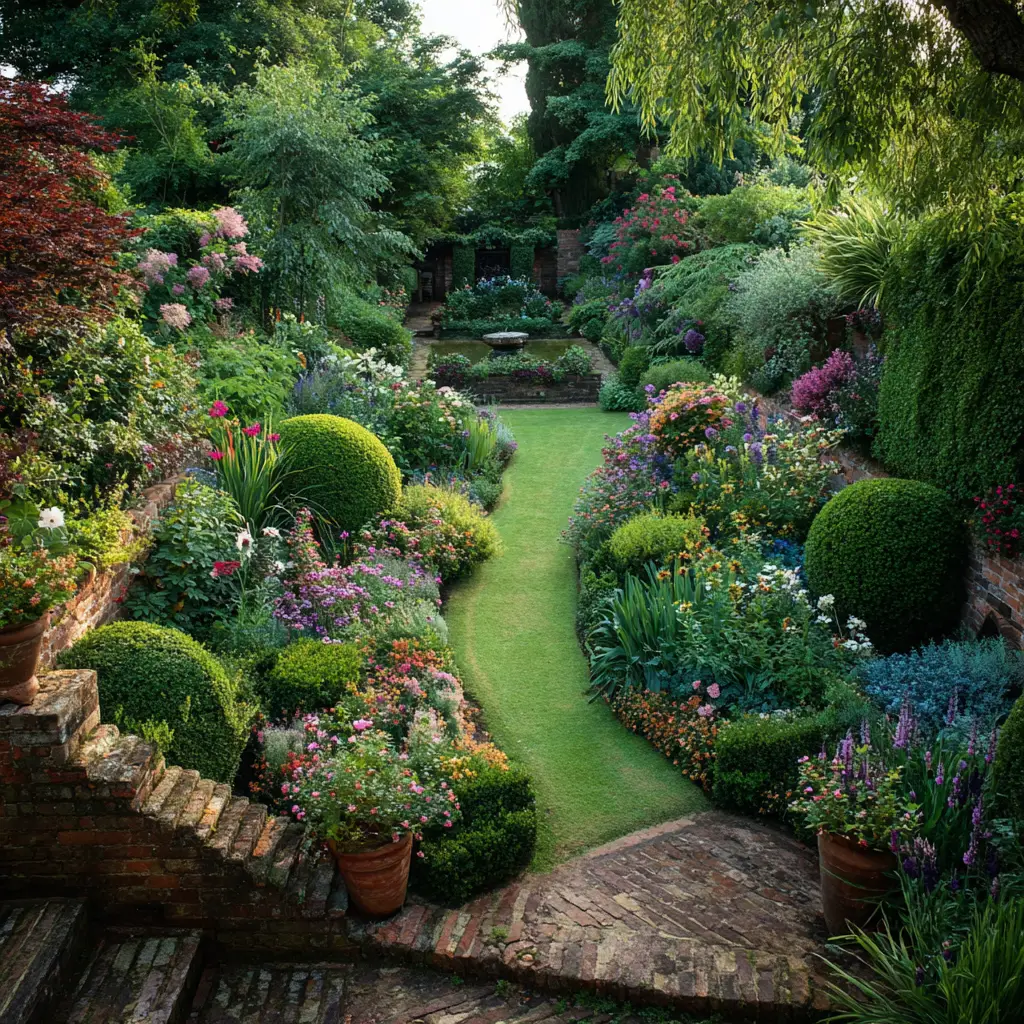
1. Brick Edging
Brick edging offers a timeless aesthetic that fits beautifully into both formal and casual garden designs. Whether you choose new bricks for a neat, uniform look or reclaimed bricks for added character and texture, this material adds structure and symmetry to your beds. You can lay them flat in a single row, stack them for height, or angle them slightly for a decorative zigzag effect. Bricks are durable, easy to maintain, and can be installed in curved or straight patterns, depending on the shape of your garden.
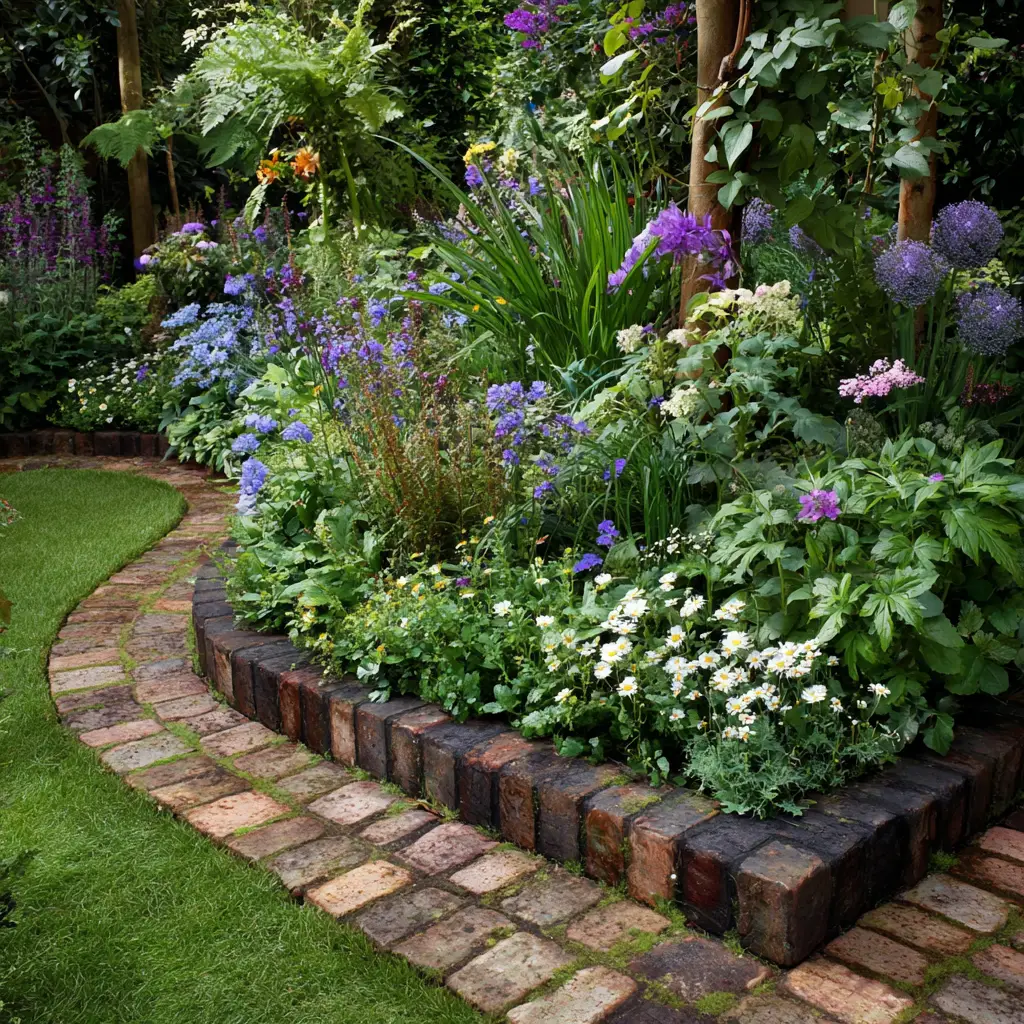
2. Stone Slabs
Natural stone slabs like flagstone or slate provide a rugged, earthy feel that’s ideal for traditional or English cottage gardens. These stones come in irregular shapes and muted colors that blend seamlessly into the landscape. Their weight keeps them firmly in place, making them an excellent choice for windy areas or gardens with loose soil. Paired with lush greenery or trailing plants, stone slab borders give a sense of permanence and tranquility.
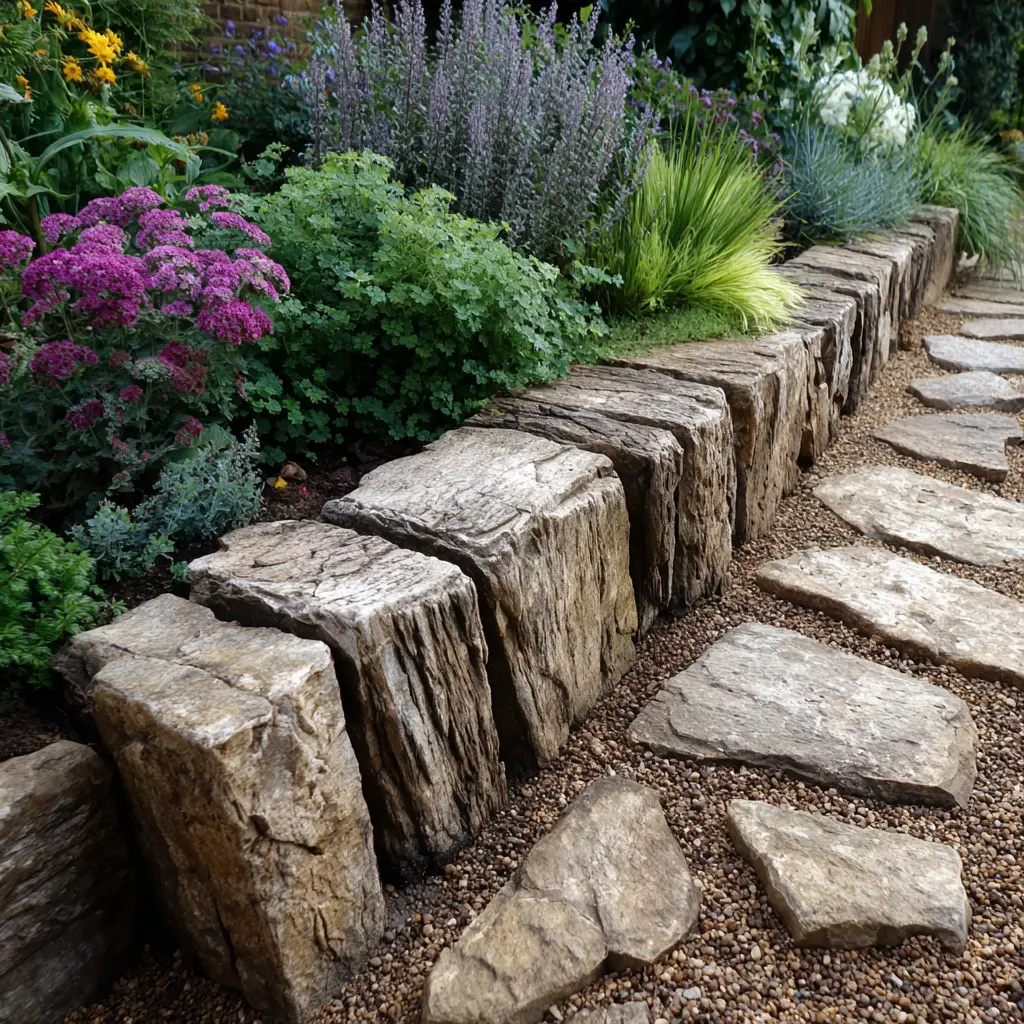
3. Wooden Sleepers
Railway sleepers, whether new or reclaimed, add a rustic and robust edge to flower beds or raised garden plots. They’re especially popular in country-style or vegetable gardens where structure and simplicity are important. Their thick, blocky appearance creates a strong visual line, while their natural material complements soil and plants. Treated sleepers resist rot and insects, lasting for years, and can be painted or stained to match your garden’s theme.
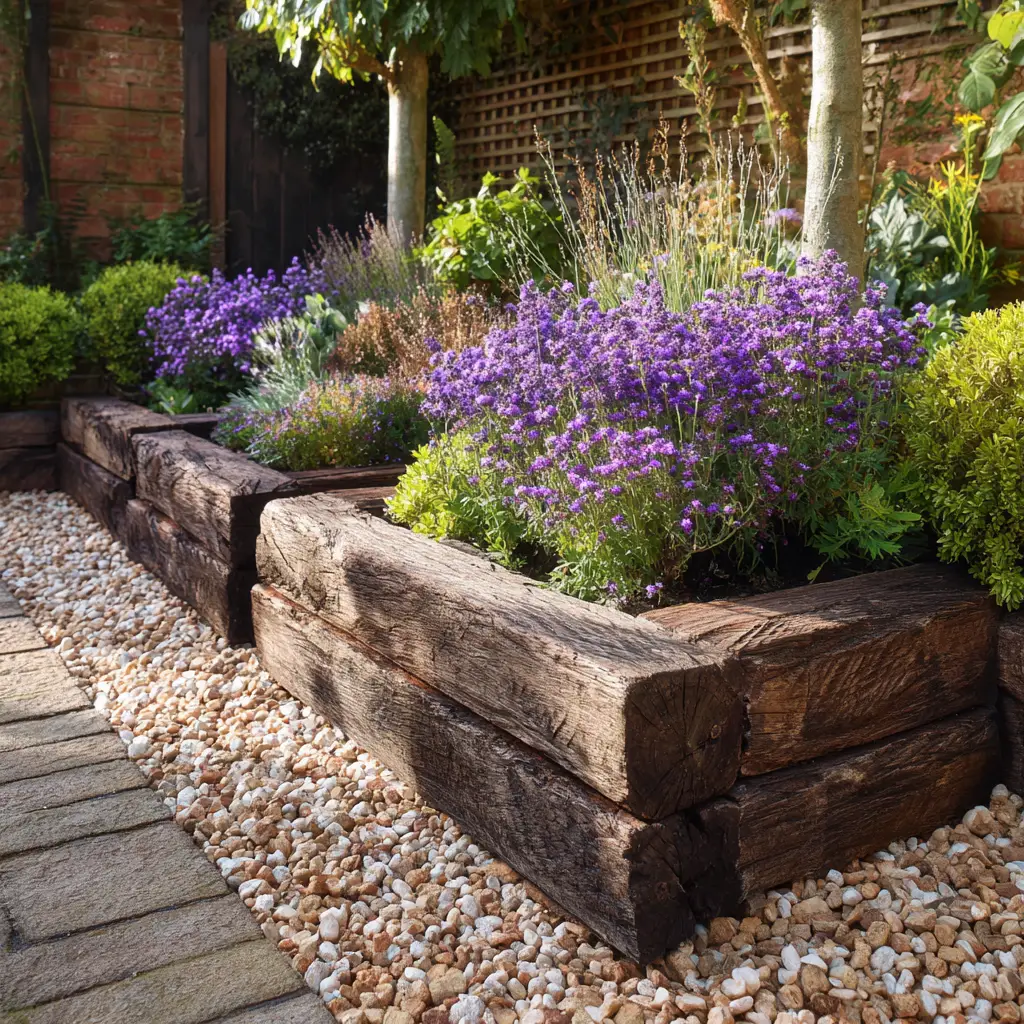
4. Metal Strips
Steel, aluminum, or corten metal edging strips are the go-to for contemporary gardens. These thin, often barely visible borders allow for seamless curves and sharp lines, giving your garden a modern, manicured look. They’re rust-resistant (or intentionally rusted in the case of corten), low-maintenance, and perfect for defining pathways, lawns, and flower beds. Because they sit nearly flush with the ground, they maintain order without disrupting the natural aesthetic.
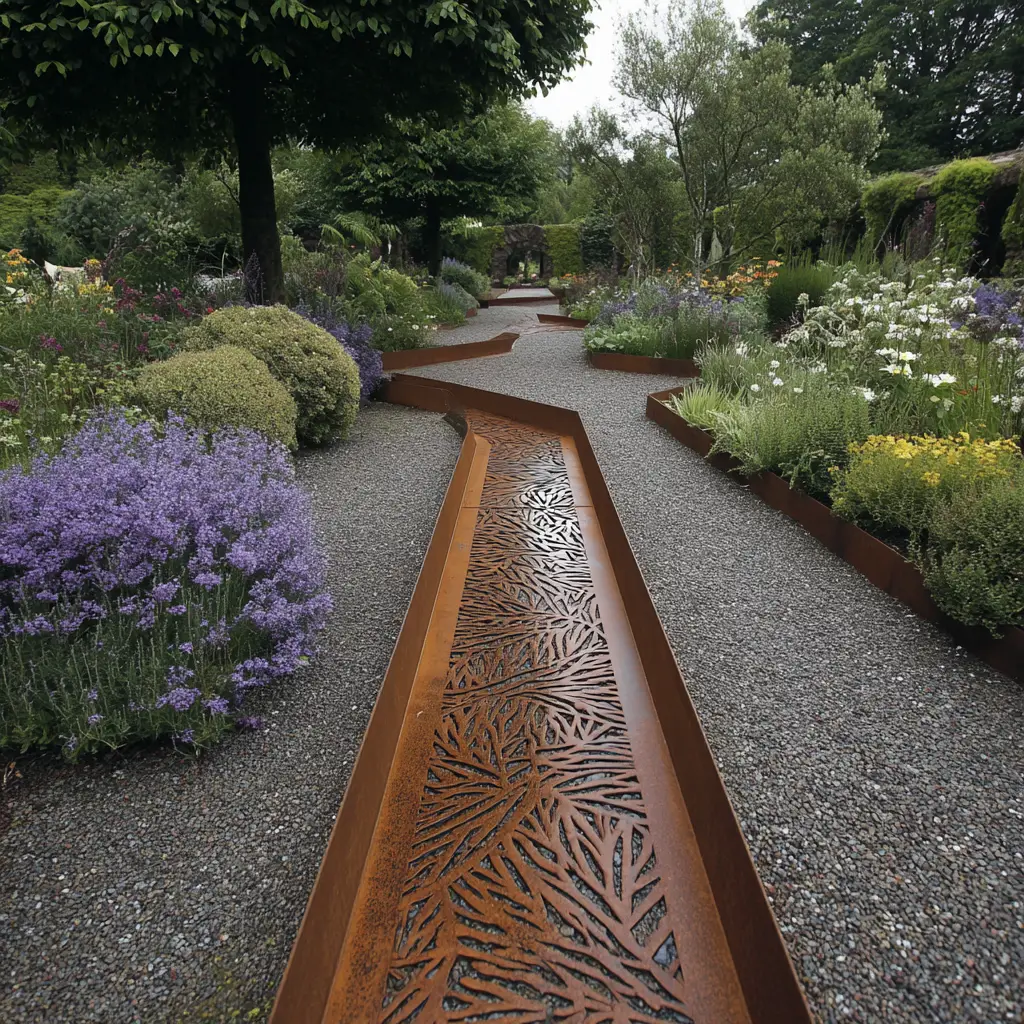
5. Woven Willow
Woven willow fencing brings a natural, handcrafted touch to garden borders. It’s made by weaving thin, flexible willow branches into small fences or panels, often attached to short stakes. This style of edging adds warmth and texture and is especially fitting for wildflower beds, herb gardens, or woodland settings. It’s eco-friendly, biodegradable, and easy to replace or update seasonally.
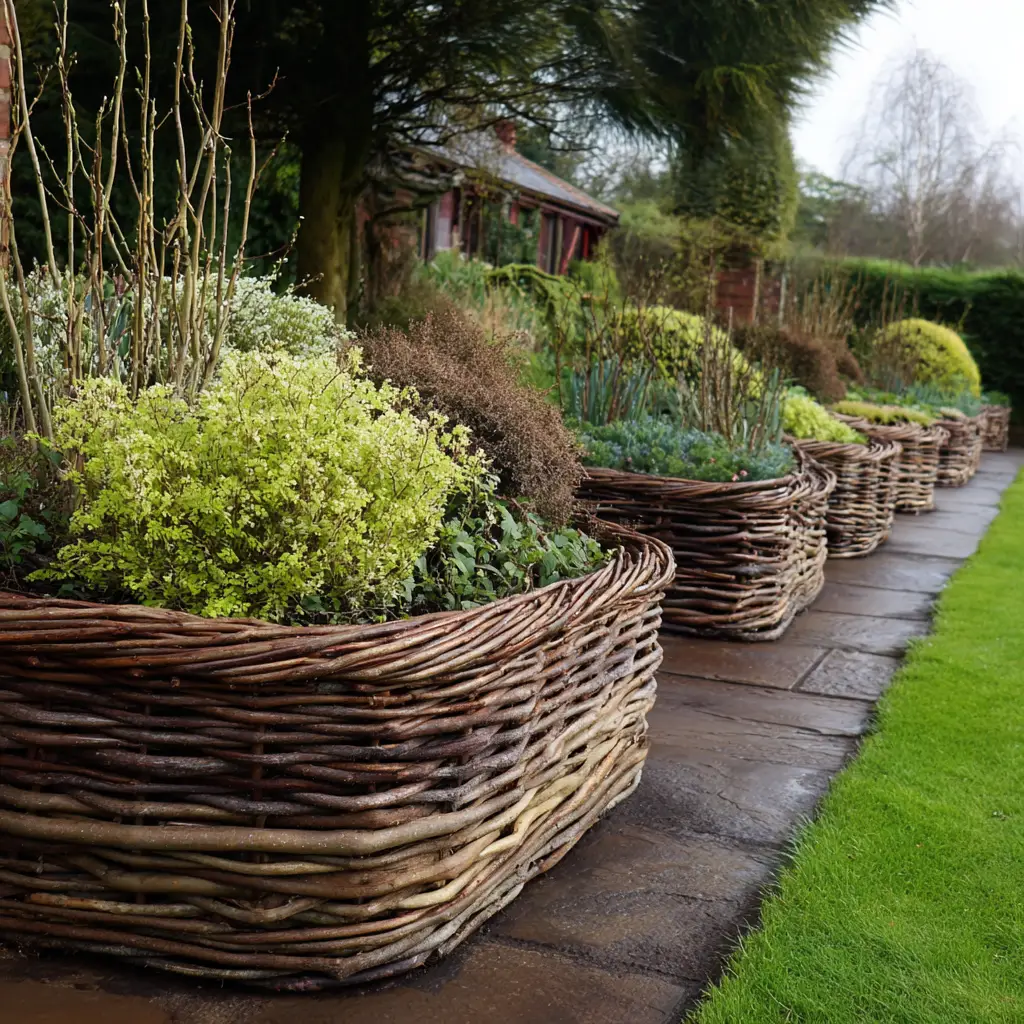
6. Recycled Bottles
Creating a garden border from recycled bottles is a creative and eco-conscious option that adds color and conversation to your garden. Bottles can be buried neck-down in the soil to create a sparkling glass edge that catches the sunlight beautifully. You can mix colors for a playful rainbow effect or stick to one color for a more uniform look. This approach works best in small beds or areas where a quirky, artistic touch is welcome.
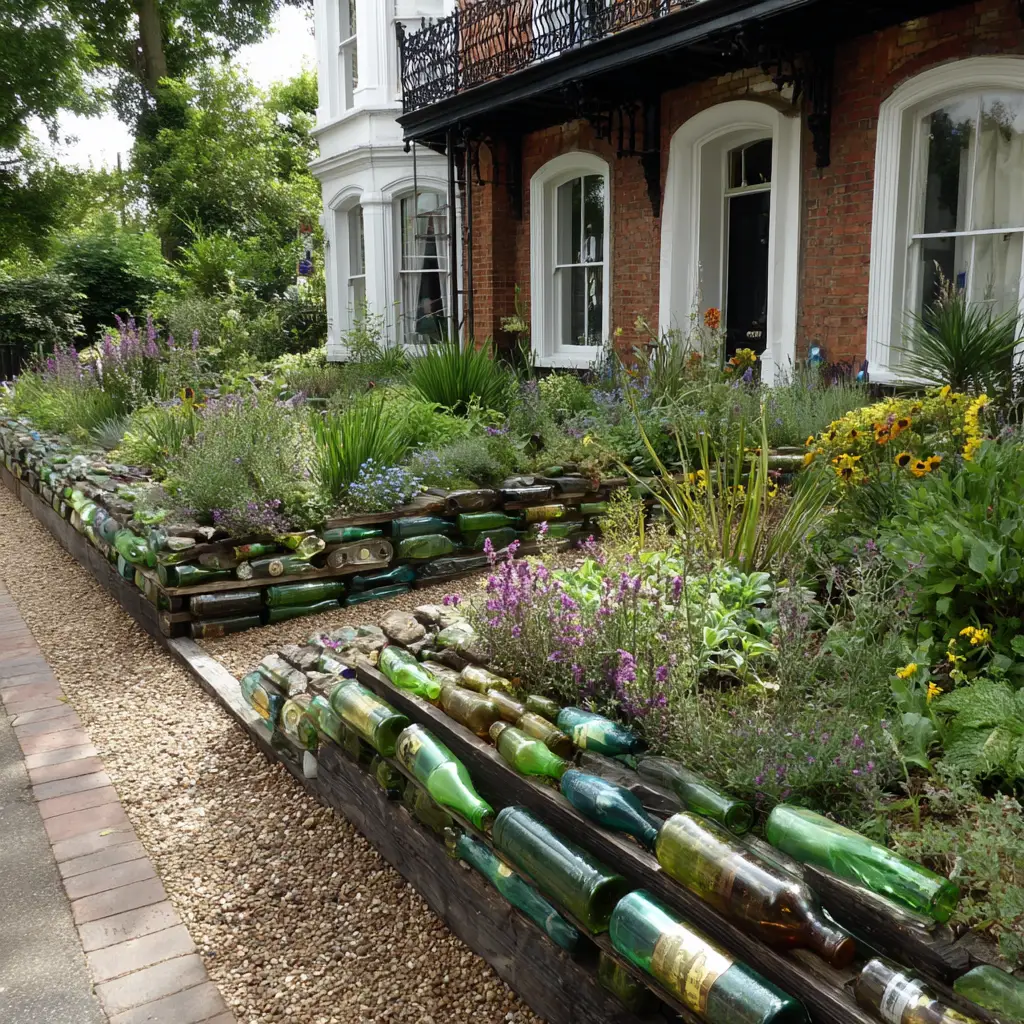
7. Pebble Trenches
Digging a shallow trench and filling it with decorative pebbles or gravel creates a subtle but effective border. The stones help with drainage, prevent soil erosion, and keep grass or weeds from creeping into your beds. Pebble trenches can also be combined with edging stones or bricks for added definition. Choose natural-colored pebbles for a calm, coastal feel or polished black or white stones for a sleek, modern look.
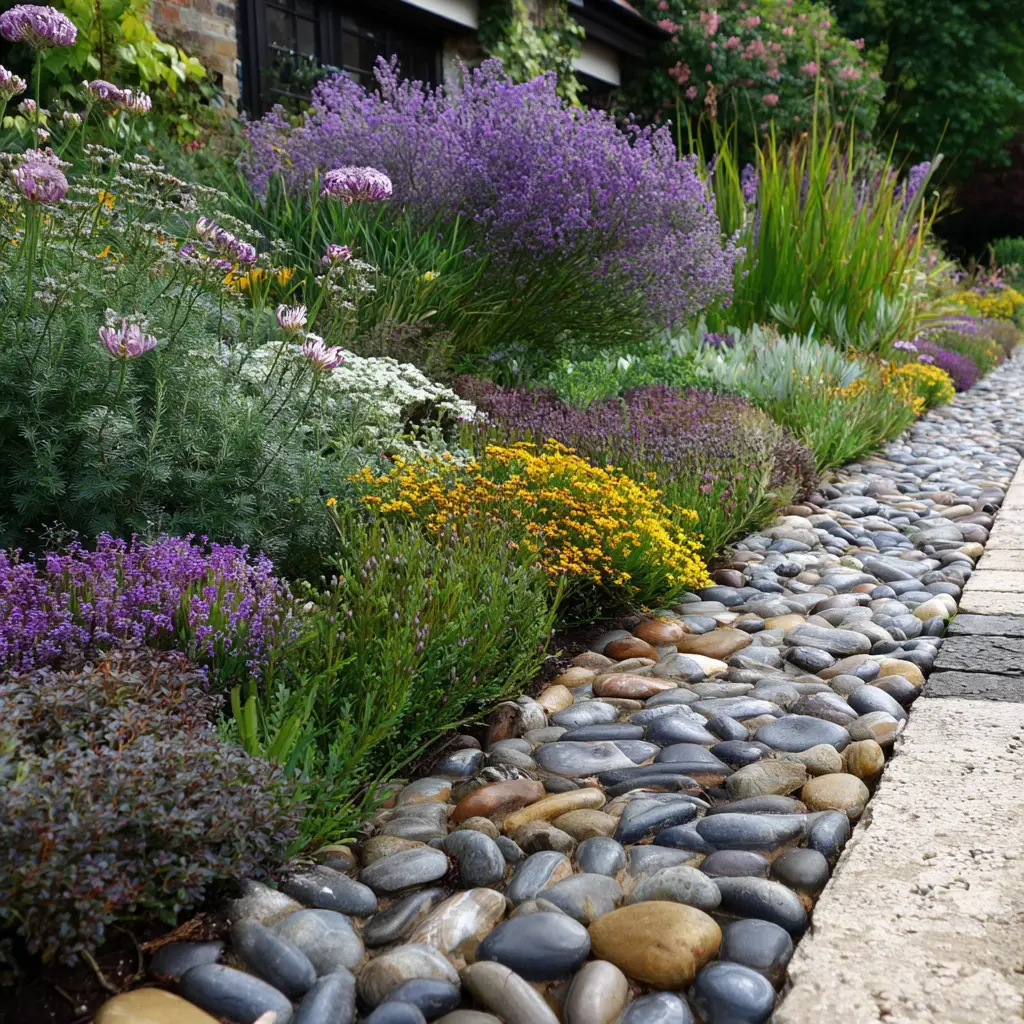
8. Concrete Blocks
Concrete blocks, available in plain or decorative forms, are a durable and cost-effective choice for edging. They can be stacked or laid flat, and some designs even allow for planting in the hollow centers, turning your border into a living wall. With their clean lines and neutral tones, concrete blocks fit well into both urban gardens and suburban yards.
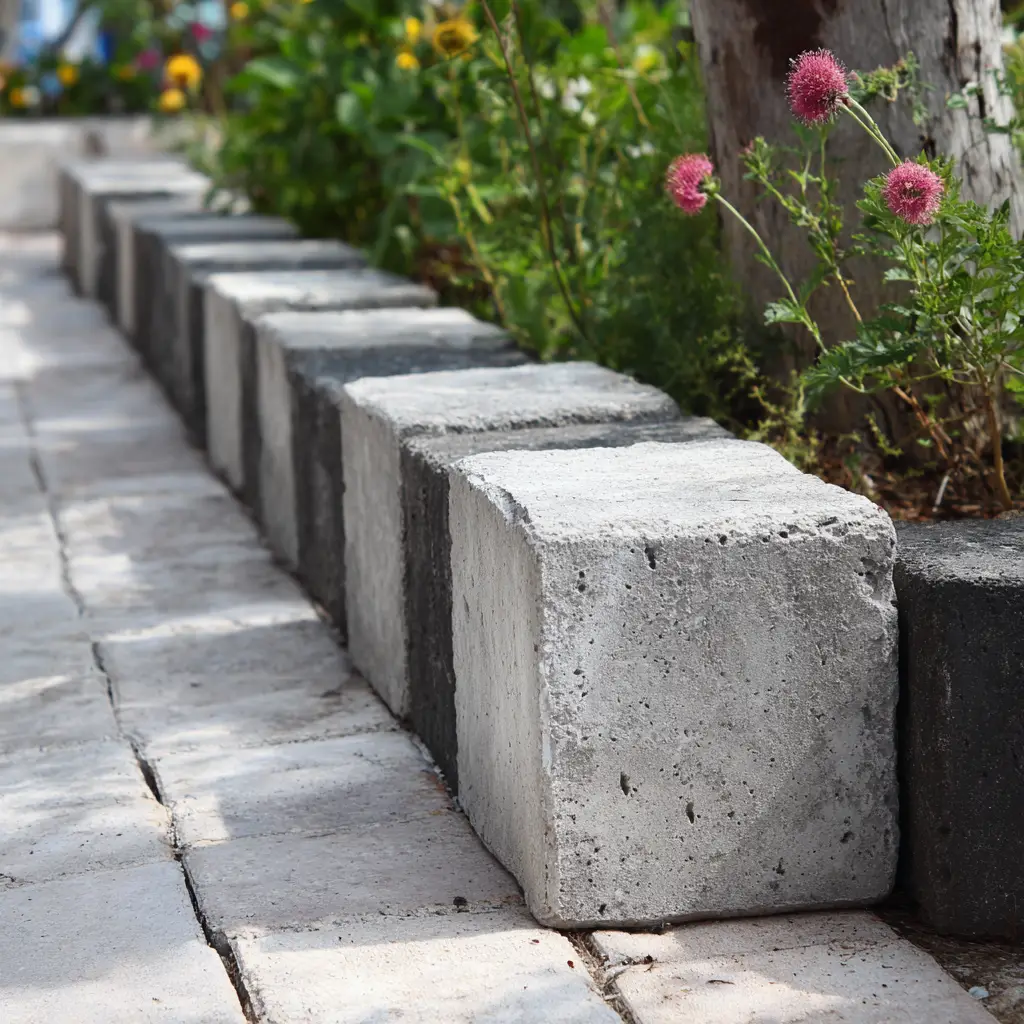
9. Bamboo Fencing
Bamboo adds an exotic and relaxed vibe to gardens, particularly those inspired by Asian landscapes or tropical climates. Use bamboo poles, panels, or even split bamboo to edge pathways or enclose small garden beds. Bamboo is lightweight, biodegradable, and sustainable, making it an eco-conscious choice. Treated properly, it can last several seasons and brings a unique texture to your outdoor design.
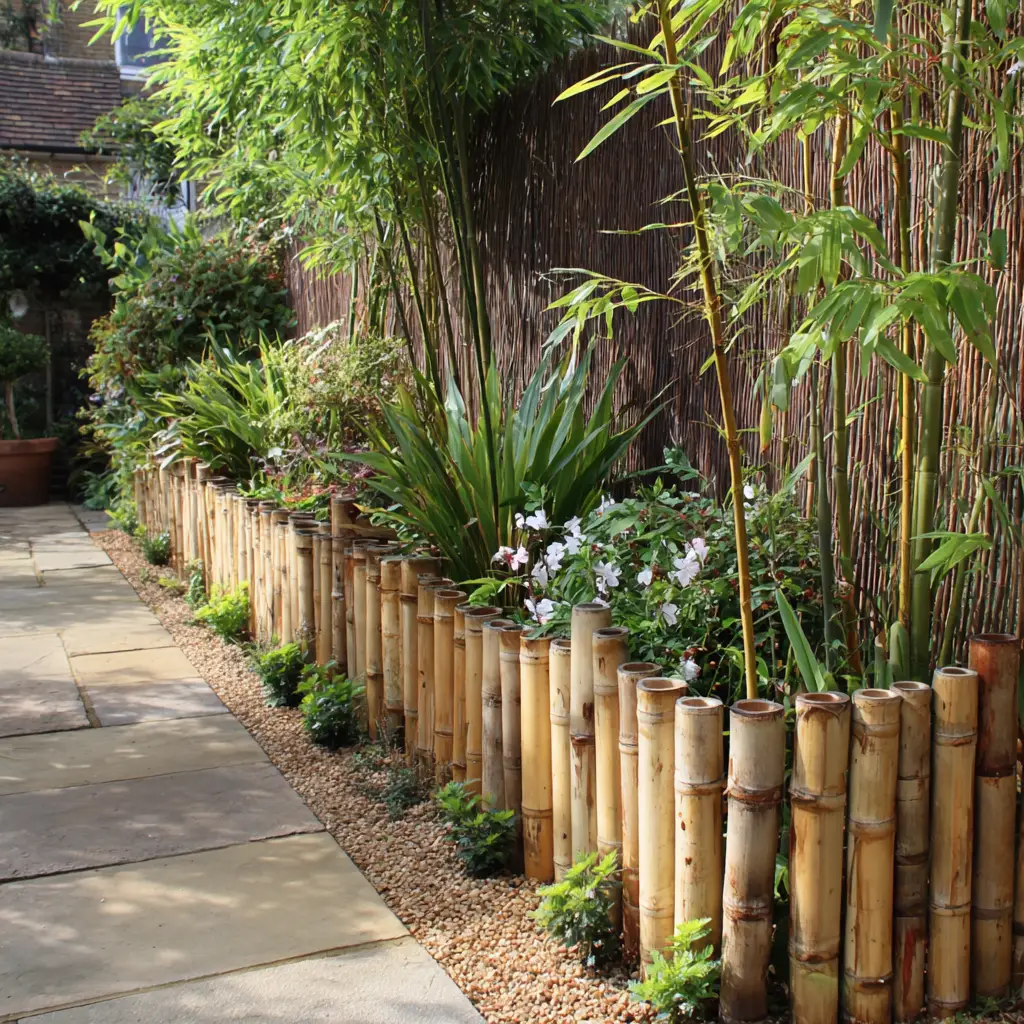
10. Log Slices
Slices of tree trunks or thick branches can be used as a charming and rustic garden edge. When embedded slightly into the ground, they create a natural path-like appearance around beds. Each log slice has a unique grain and ring pattern, adding character and a sense of handmade artistry. This border idea is perfect for forest-inspired gardens or spaces designed for children and play.
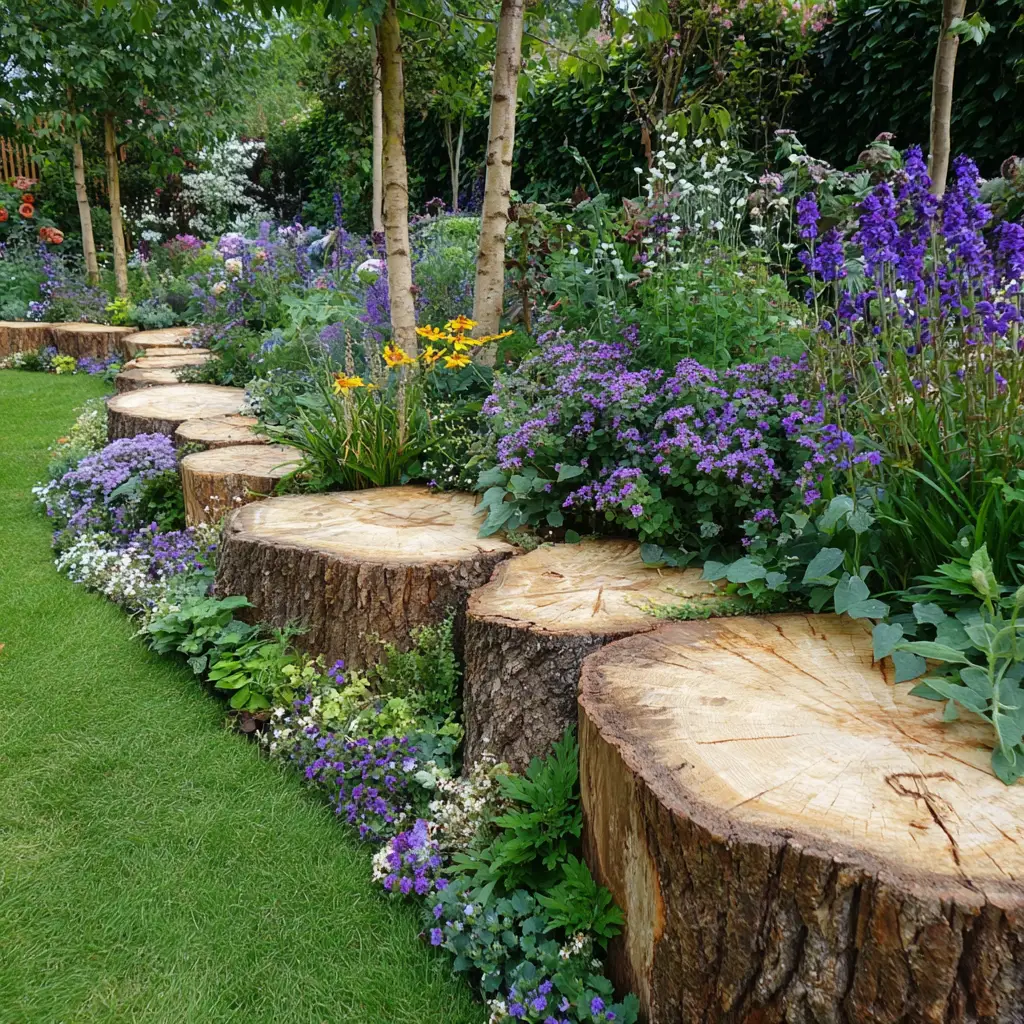
11. Gabion Walls
Gabions are wire mesh cages filled with rocks, stones, or even broken bricks. They offer a contemporary, industrial feel while also being highly practical as retaining walls or tall borders for raised beds. You can use different rock sizes or colors to create patterns and textures. Gabions are sturdy, resistant to erosion, and ideal for sloped gardens or places needing significant structural support.
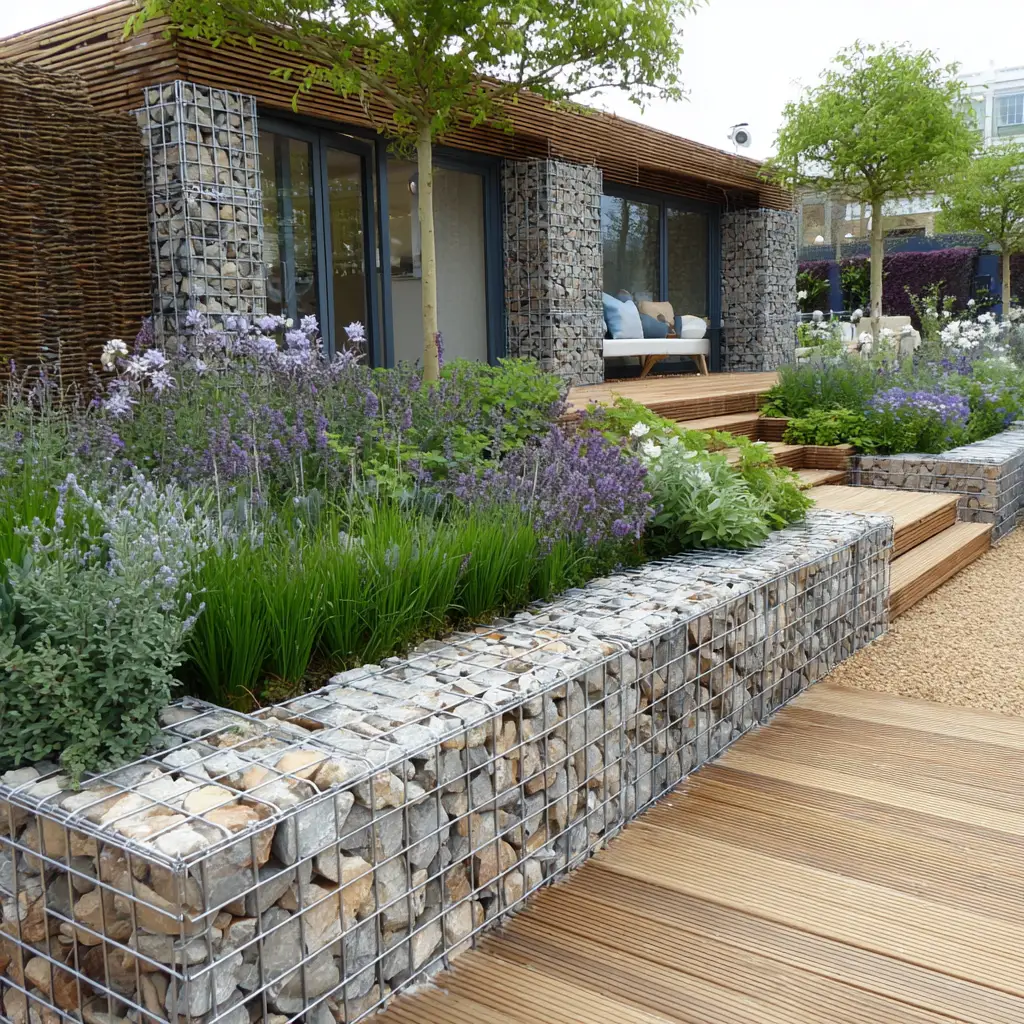
12. Mosaic Tiles
Mosaic tile borders turn your garden into a canvas. Using broken tiles, old china, or ceramic pieces, you can create colorful, custom patterns along the edges of beds or pathways. The result is a playful and artistic border that’s especially striking in gardens with Mediterranean or bohemian flair. Apply the pieces to concrete edging or use them to fill shallow trenches for a truly unique look.
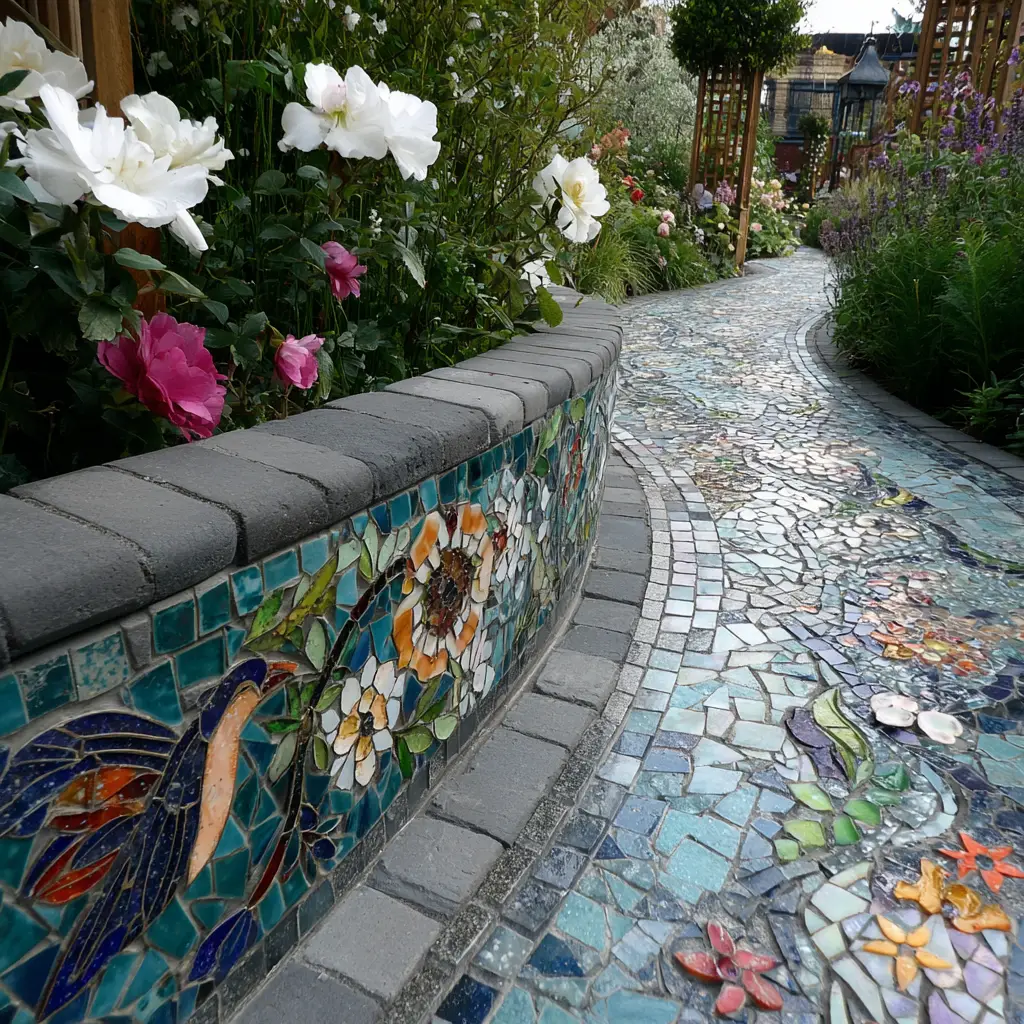
13. Low Hedges
Planting a short hedge is a classic and elegant way to define borders. Boxwood, lavender, or rosemary are popular choices due to their dense growth and pleasant fragrance. Hedges add a soft, living edge that changes with the seasons and can be trimmed into formal shapes or left a bit wild for a more relaxed look. While they require maintenance, they reward you with a timeless, green boundary.
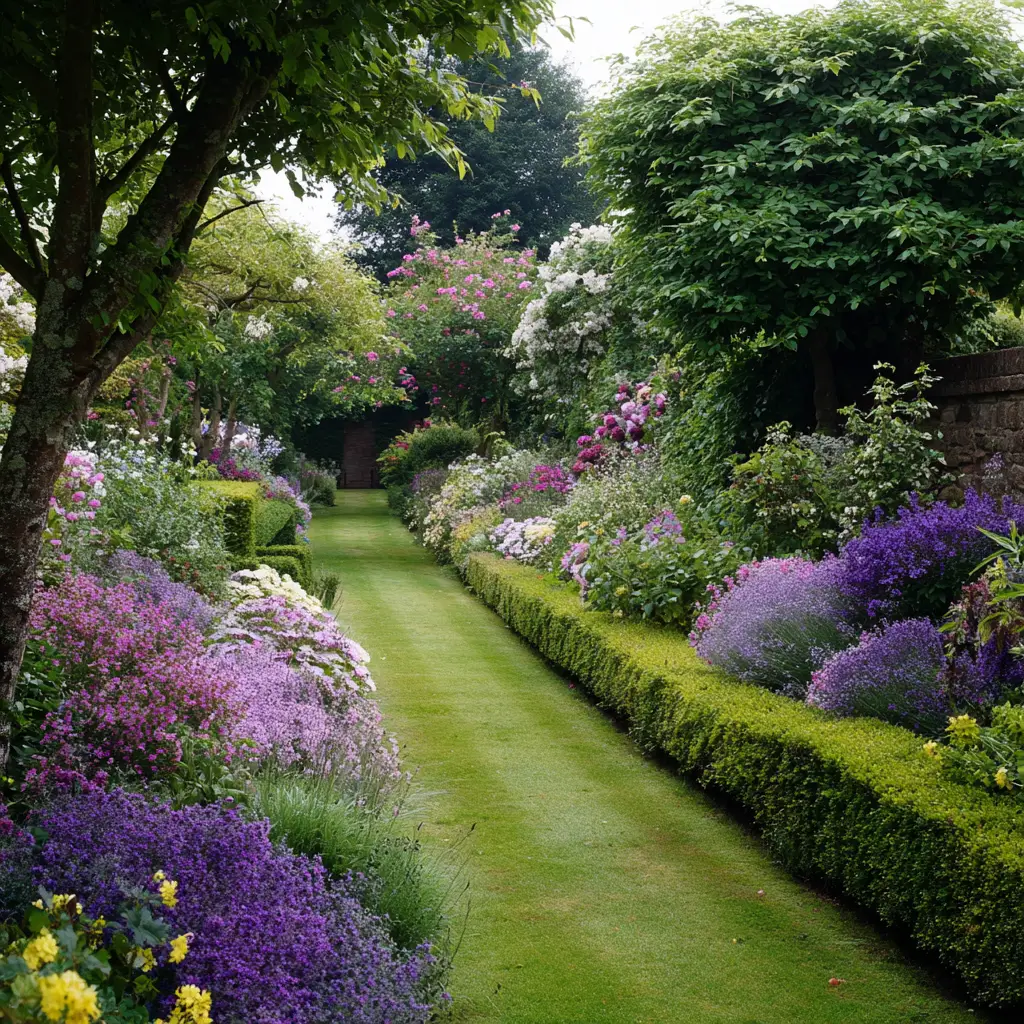
14. Terracotta Pots
Using small terracotta pots turned on their sides or partially buried adds a whimsical and informal border to your garden. It’s a great way to repurpose cracked or mismatched pots. These borders work well in herb or kitchen gardens, giving a Mediterranean feel and encouraging a relaxed atmosphere.
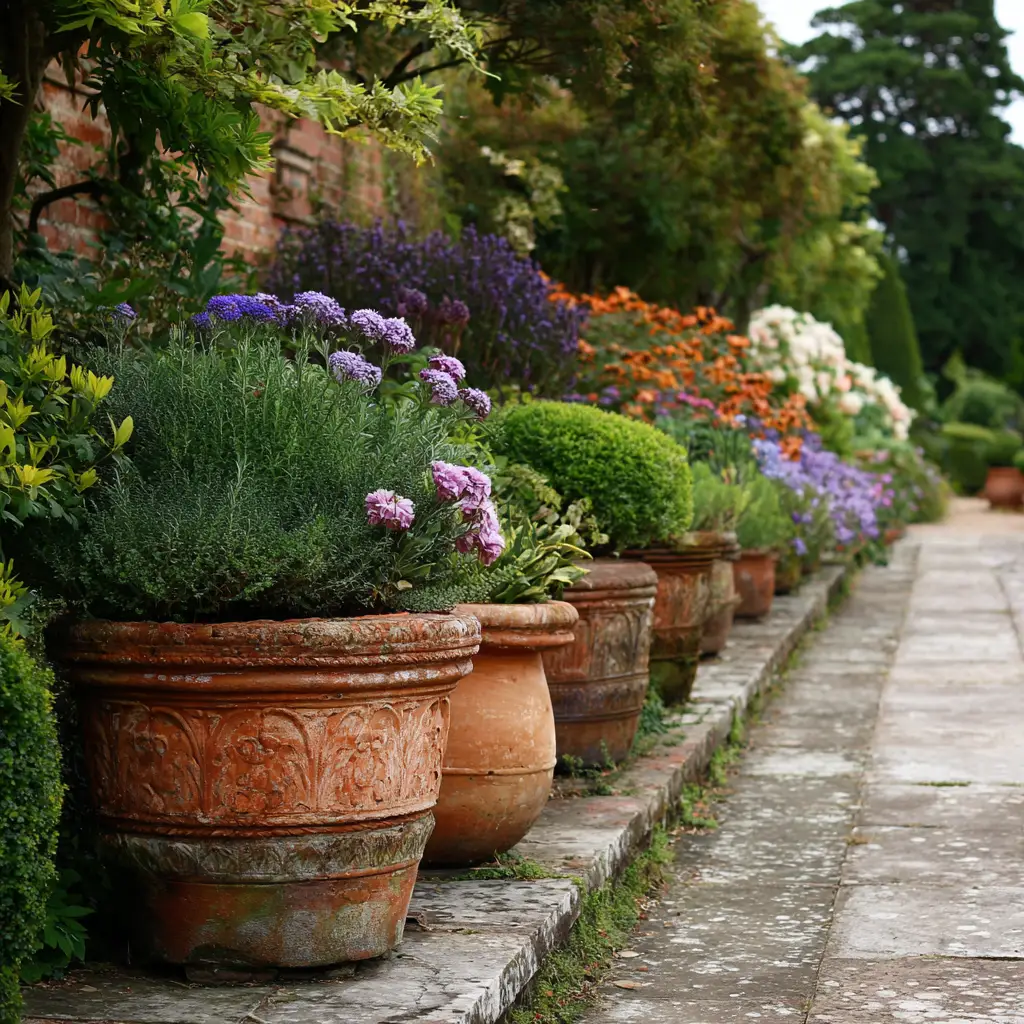
15. Corten Steel Panels
Corten steel develops a beautiful, rust-colored patina over time, creating a weathered yet modern look that contrasts well with greenery. It’s durable, doesn’t require painting, and holds up well in harsh weather. Corten panels can be formed into straight or curved borders, and because they’re naturally oxidized, they become even more beautiful as they age.
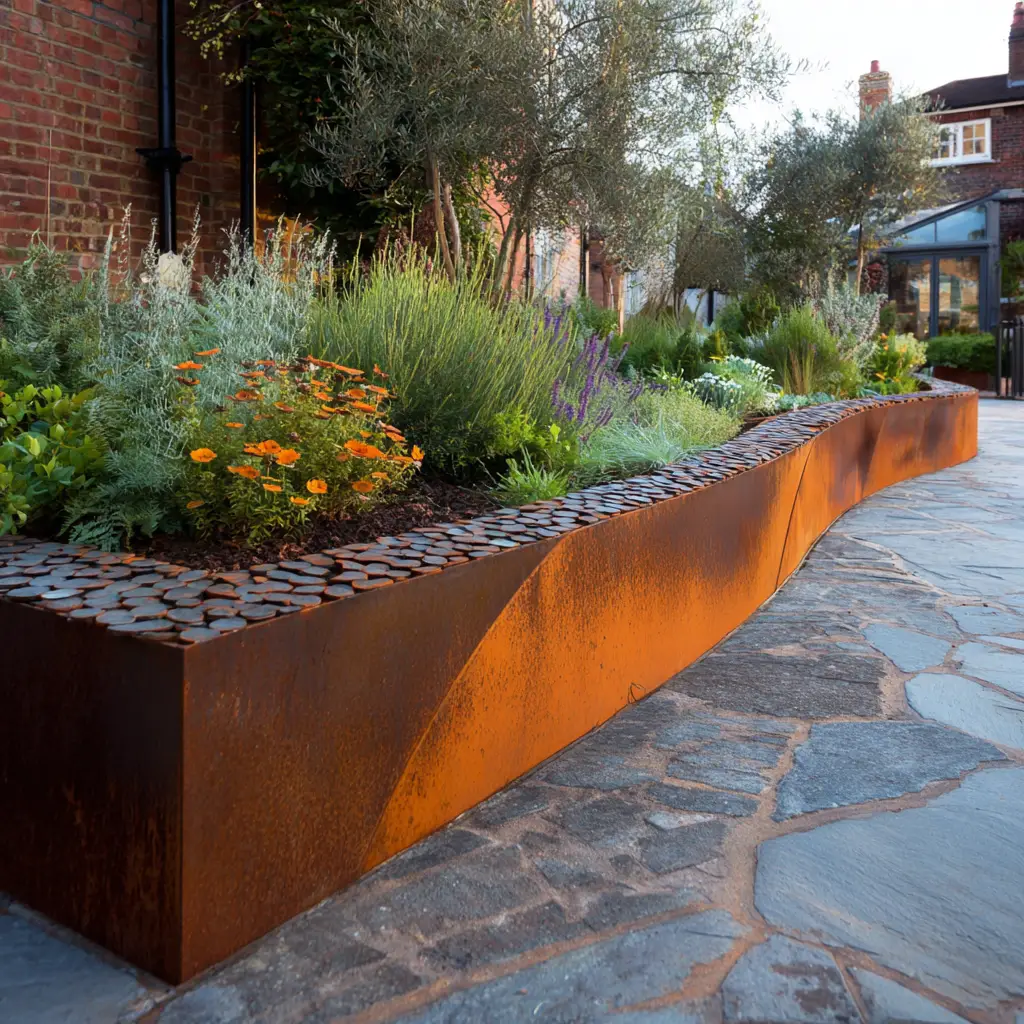
16. Shell Edging
Large seashells or crushed shells make an eye-catching border, especially in coastal gardens. They reflect light, help retain moisture in the soil, and discourage weeds. If you live near the beach, sourcing shells can be a fun and free activity, adding a personal touch to your garden’s design.
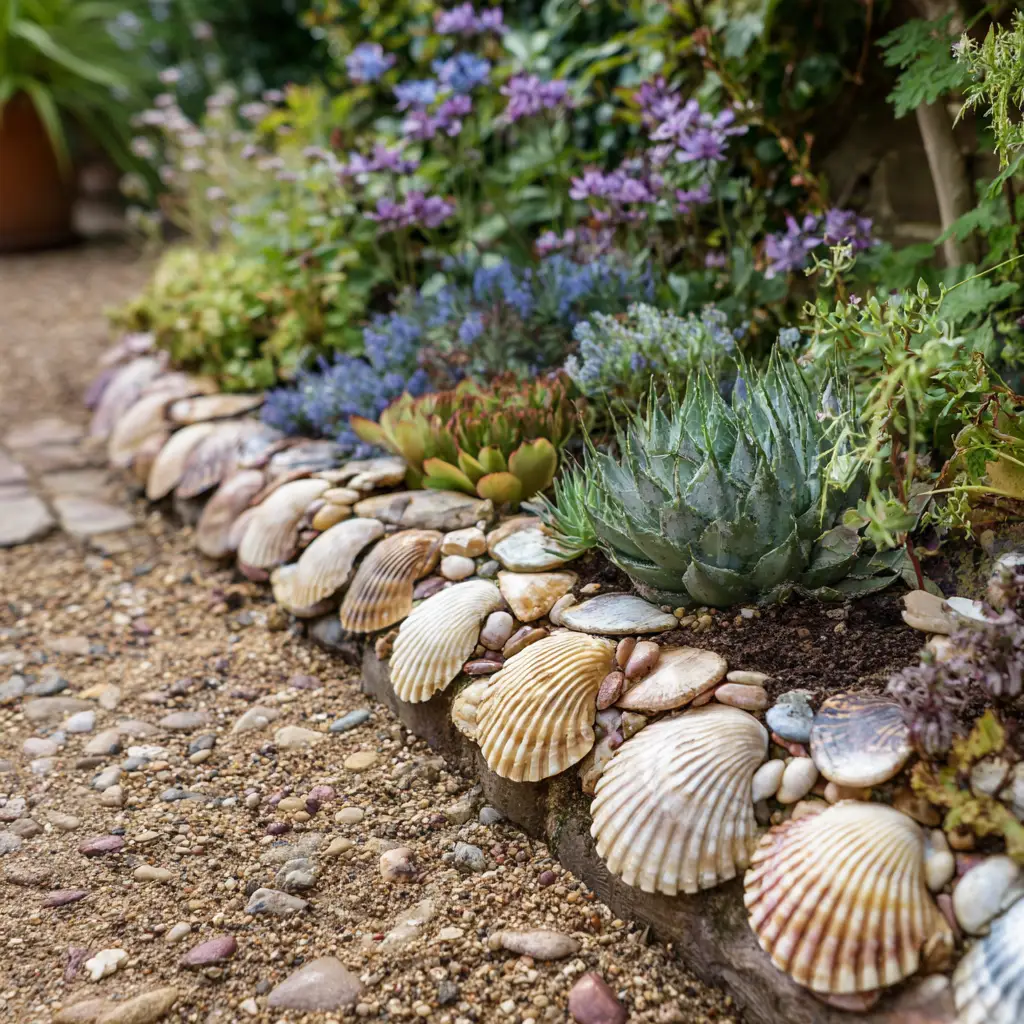
17. Railroad Ties
Railroad ties offer bold, elevated borders perfect for defining large or raised beds. They’re extremely durable and weather-resistant. However, be cautious about using old, creosote-treated ties around food crops, as the chemicals can leach into the soil. For decorative, non-edible garden beds, they’re a dramatic and structured option.
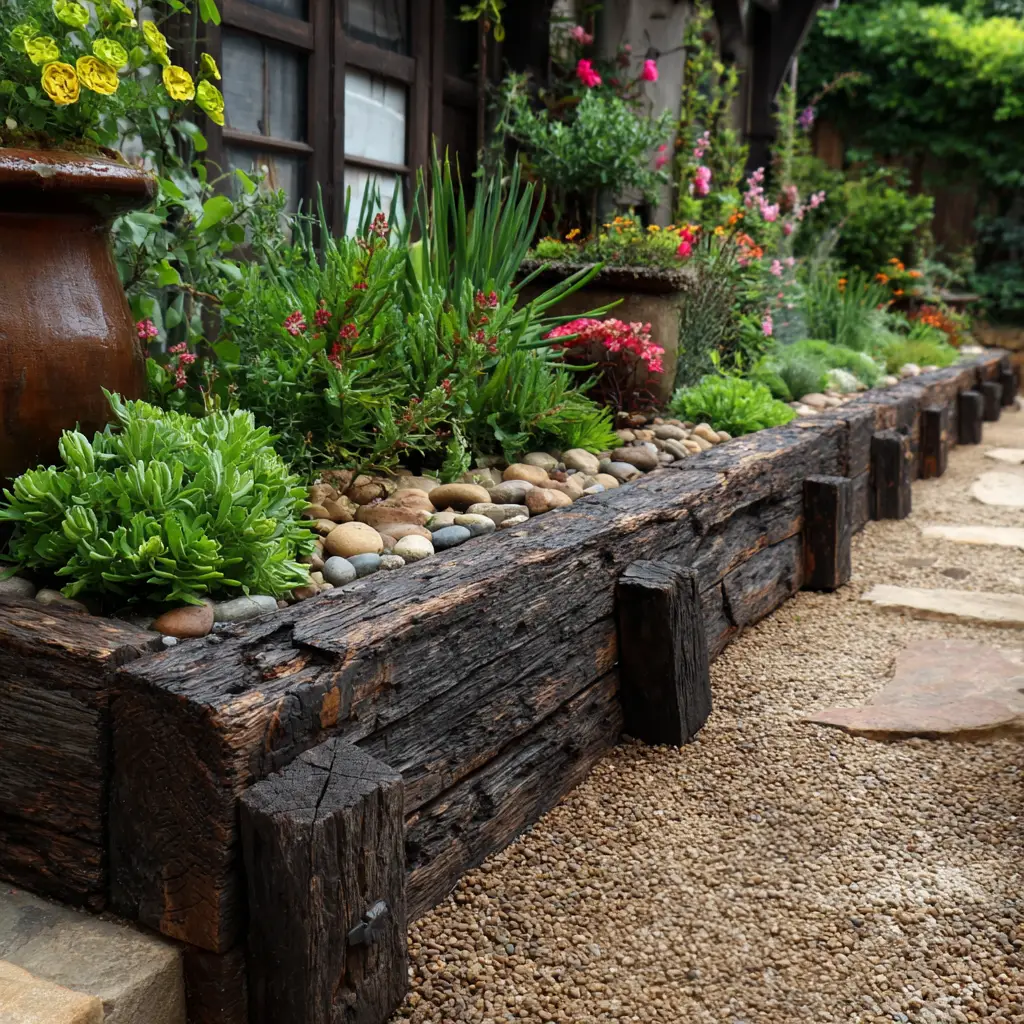
18. Plastic Edging
Plastic garden edging is budget-friendly, easy to install, and effective in keeping mulch, soil, and grass where they belong. Modern versions come in textured or stone-look finishes, blending better with the landscape. It’s a low-profile option, best for gardeners looking for functionality over design.
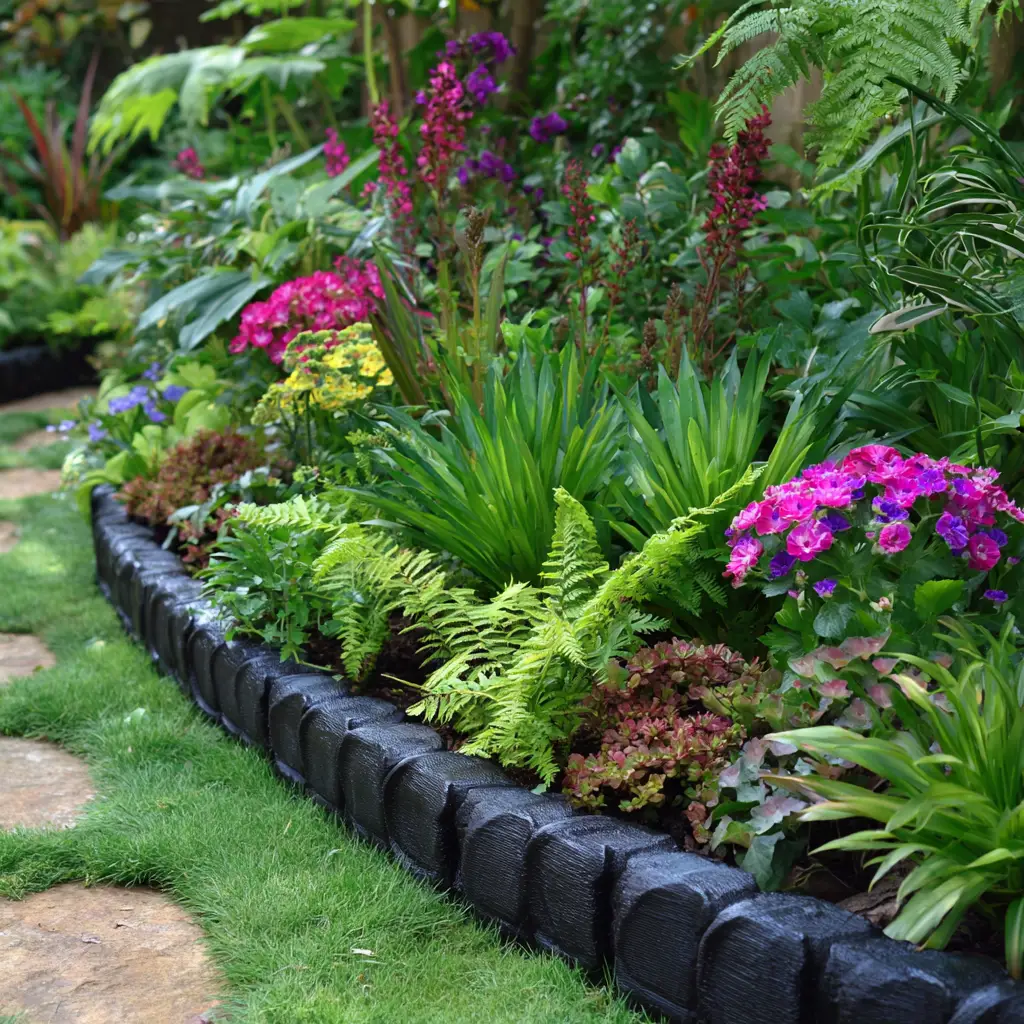
19. Painted Timber
Timber borders painted in bright or soft colors can add a pop of personality to your garden. Consider color-coding different beds for herbs, flowers, or vegetables. Use weather-resistant paint to ensure the wood lasts through the seasons. It’s a fun weekend DIY project that can involve the whole family.
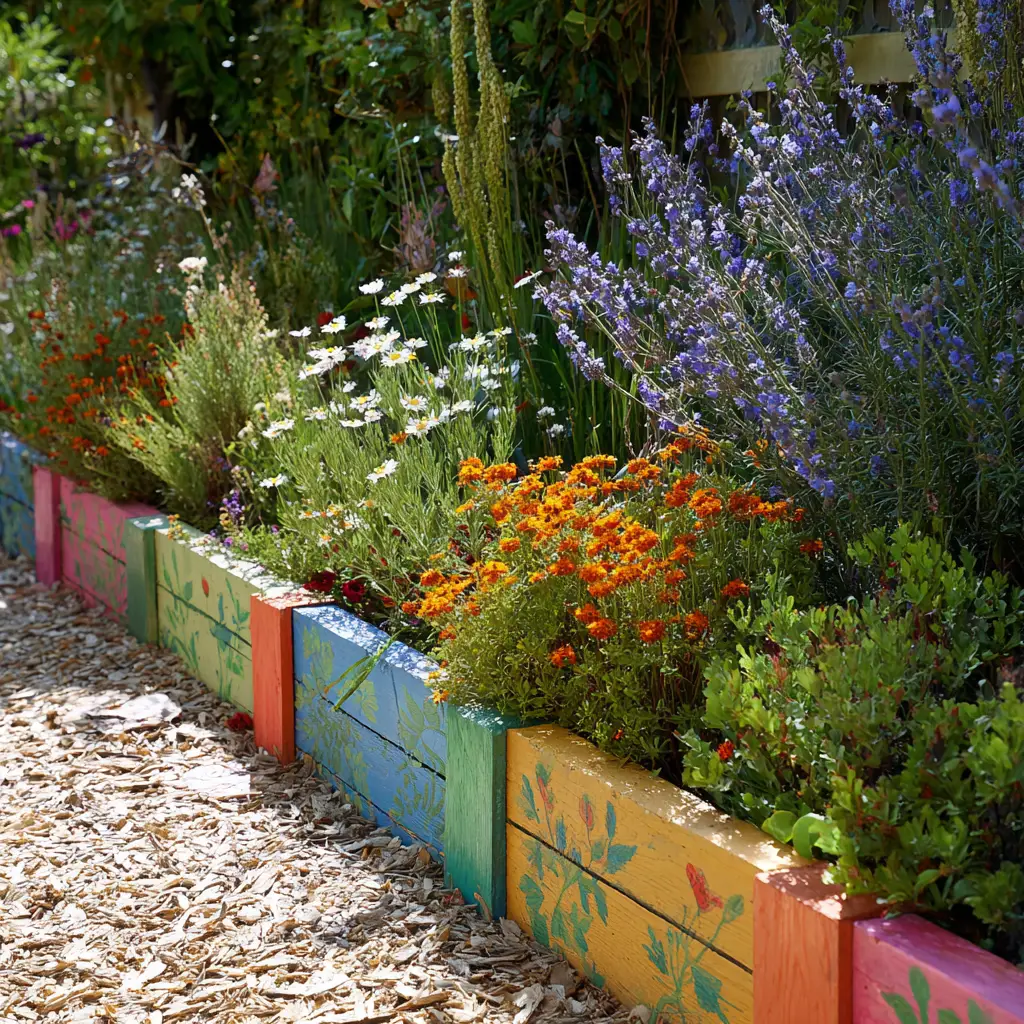
20. Tile Roof Shingles
Repurpose old ceramic roof tiles to create a curving, scalloped edge that gives your garden an old-world European feel. These are often found at architectural salvage yards and offer an elegant solution with a touch of history and charm.
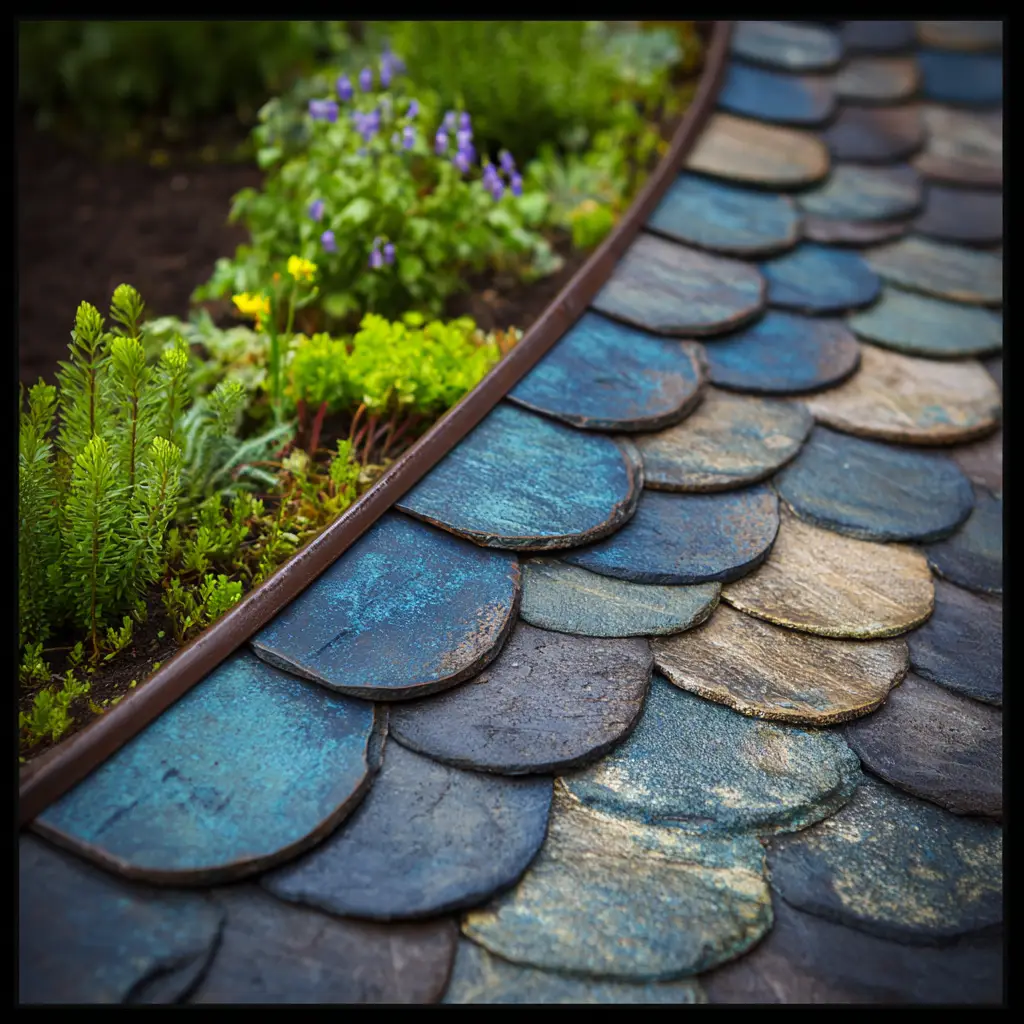
21. Succulent Rows
Succulents planted tightly along the edge of a bed form a beautiful, living border that changes with the seasons. Hardy varieties like sedum, echeveria, or sempervivum thrive in dry conditions and need little maintenance. This type of edging brings color and texture while being low-maintenance and drought-tolerant.
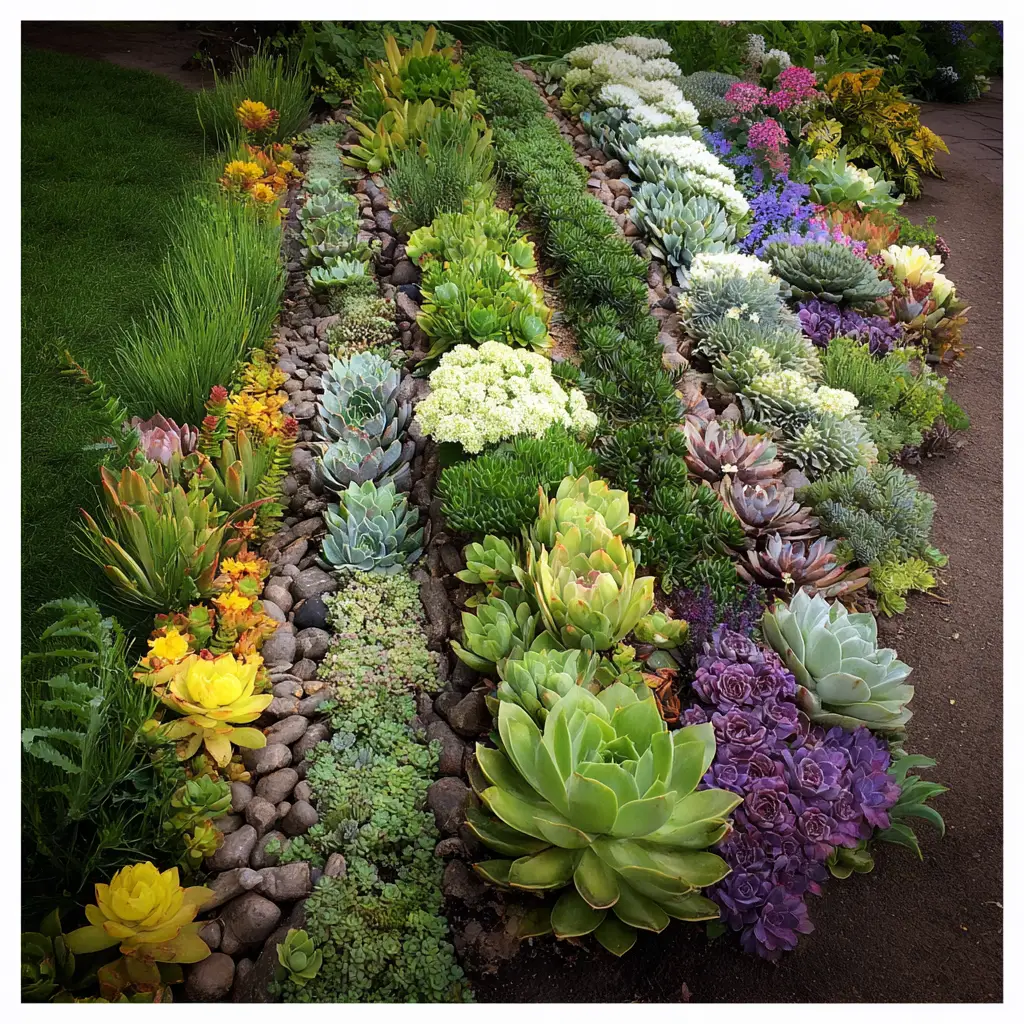
22. Rope Edging
Thick nautical ropes laid along the edge of paths or beds bring a touch of coastal charm. Secure them with wooden pegs or loop them loosely for a more relaxed feel. This works well in seaside or beach-themed gardens and softens the transition between hardscape and softscape.
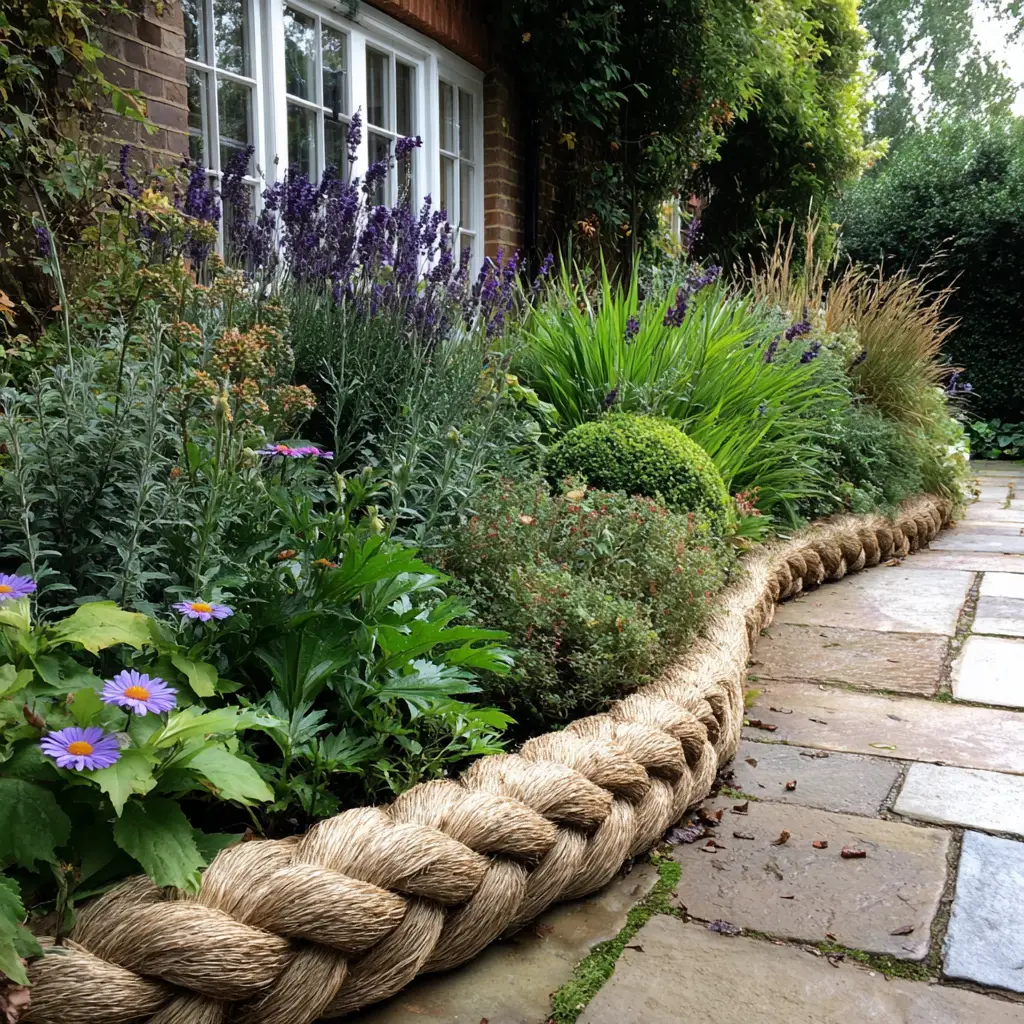
FAQs About Garden Borders
Are garden borders just decorative?
Not at all. While garden borders can add beauty and polish, they also serve important functional roles. They help to separate different parts of your garden, keep mulch and soil contained, prevent grass from creeping into flower beds, and even help with drainage. A well-placed border can reduce maintenance and keep your garden looking neat throughout the seasons.
Can I install garden borders myself?
Yes, many garden borders are ideal for DIY installation. Materials like bricks, logs, pebbles, or plastic edging require basic tools and a bit of planning. If you’re tackling more advanced options like gabion walls or poured concrete, it may be worth getting help or advice from a professional. Either way, it’s a rewarding project that can be completed over a weekend.
How tall should my garden border be?
That depends on its purpose. For separating lawns from flower beds, a low 3–6 inch border usually works well. If you’re building raised beds, you may need a border 12 inches or higher to contain the soil. Taller edging also provides better weed control and is more visible as a design feature.
How can I keep garden borders looking good year-round?
Regular upkeep is key. Clear away debris, trim any overhanging plants, and check for loose or damaged sections. If your border is made from wood, consider sealing or staining it once a year. Living borders like hedges or succulents may need seasonal pruning and watering, while materials like metal or stone require little maintenance beyond an occasional clean.
Conclusion
Garden borders are more than just a way to separate spaces—they’re an opportunity to express your style, enhance the beauty of your plants, and bring order to the natural chaos of a growing garden. From simple plastic edging to intricate mosaics and living green hedges, the choices are as varied as the gardens themselves.
